DWP Front Wing
€700.00
Description
Armstrong DWP Front Wing
Designed for Downwind and Wave Performance
The Armstrong DWP Front Wing is expertly engineered to excel in downwind and wave foiling conditions. Its advanced design offers a harmonious blend of lift, speed, and control, allowing riders to effortlessly harness ocean energy. Consequently, the wing provides exceptional glide and pumping efficiency, reducing rider fatigue during extended sessions.DWP Front Foil
Cutting-Edge Carbon Fiber Construction
Built with Armstrong’s proprietary high-modulus carbon fiber and CNC-milled foam core, the DWP wing balances lightweight agility with robust strength. This combination ensures minimal flex while maintaining durability, thus delivering precise responsiveness even in challenging surf or downwind runs.DWP Front Foil
Hydrodynamic Efficiency for Smooth Ride
The wing’s shape is optimized using state-of-the-art computational fluid dynamics (CFD) to reduce drag and maximize lift. Furthermore, the carefully sculpted wingtips minimize vortex formation, enhancing stability and allowing smoother turns. These design features translate into better control, whether carving waves or charging downwind.
DWP Front Foil Seamless Integration into Armstrong’s Modular System
Compatibility with Armstrong’s modular A+ system enables easy customization of your foil setup. By combining the DWP Front Wing with various fuselages, masts, and stabilizers, riders can adapt their gear to specific conditions or preferences. This flexibility extends the wing’s utility across multiple foiling disciplines, including wing foiling, prone foiling, and SUP foiling.
DWP Front Foil Key Features at a Glance
-
High-modulus carbon fiber construction for strength and lightness
-
Precision CNC-milled foam core ensures consistent shape and performance
-
CFD-optimized hydrodynamic profile reduces drag and improves lift
-
Advanced wingtip design for enhanced stability and maneuverability
-
Full compatibility with Armstrong A+ modular system for customization
-
Durable UV-protective coating extends lifespan in harsh conditions




Armstrong DWP Front Wing: Design & Engineering Details
hyperlite wakesurf shim Precision Engineering for Peak Efficiency
The Armstrong DWP Front Wing was meticulously designed to optimize downwind and wave foiling performance. Armstrong’s engineering team combined advanced materials with innovative shaping techniques to achieve superior lift and stability without sacrificing speed.hyperlite wakesurf shim
Carbon Fiber Construction: Strength Meets Lightness
Armstrong employs high-modulus carbon fiber arranged in a multi-directional layup. Consequently, the wing offers exceptional stiffness, which ensures that rider input is transmitted instantly and accurately. At the same time, weight is kept to a minimum, promoting effortless maneuverability.
CNC-Milled Foam Core for Consistent Shape
The wing’s core is crafted from precision CNC-milled closed-cell foam. This manufacturing process guarantees uniform thickness and shape across every wing produced, which translates into consistent hydrodynamic performance. Moreover, the foam core adds structural integrity while maintaining an ultra-light overall weight.
Hydrodynamic Optimization through CFD
Using computational fluid dynamics (CFD), Armstrong refined the wing’s camber, thickness distribution, and wingtip geometry. This approach minimizes drag and delays flow separation, allowing for longer, smoother glides. Additionally, the wingtip design reduces vortex generation, resulting in enhanced stability and responsiveness during turns.
Modular System Compatibility
Designed to integrate perfectly with Armstrong’s A+ modular system, the DWP Front Wing can be combined with various fuselages, masts, and stabilizers. This modularity allows riders to tailor their setup to specific conditions or disciplines, enhancing versatility and value.
Durability and Environmental Considerations
The wing is finished with a UV-resistant coating that protects the carbon fiber from sun damage and environmental wear. Armstrong also applies sustainable manufacturing practices, including eco-friendly resins and waste reduction, which reflect the brand’s commitment to responsible production.
Armstrong DWP Front Wing: Performance Analysis
Built for Endless Glide and Maximum Flow
The Armstrong DWP Front Wing delivers phenomenal performance across downwind and wave foiling conditions. Its high aspect ratio and advanced hydrodynamic shape ensure prolonged glide with minimal input. Riders experience reduced resistance and greater forward momentum, making long-distance runs feel smooth and efficient.
downwind sup foil Speed Without Sacrificing Control
Although optimized for glide, the DWP also offers impressive speed. Riders accelerate easily in swell or wind-driven chop. Moreover, the wing remains stable at higher velocities, allowing foilers to maintain control when carving, pumping, or navigating tight lines. Its stiffness ensures immediate response, even under pressure.
downwind sup foil Effortless Pumping Efficiency
Thanks to its efficient foil section and lightweight construction, the DWP Front Wing excels at low-energy pumping. Whether riding in marginal conditions or connecting bumps on a downwind run, the wing requires minimal effort to stay flying. As a result, riders experience less fatigue and longer sessions.
Seamless Wave Engagement
In wave environments, the DWP wing offers unmatched responsiveness and flow. It engages early, making takeoffs smooth and predictable. Additionally, it allows fluid transitions from bottom turns to top turns without losing lift or speed. Its wide wingspan enhances drive while still delivering sharp, reactive turns when needed.downwind sup foil
Open Ocean Mastery
Riders tackling open-ocean downwinders benefit from the DWP’s superior glide ratio. With each bump or swell, the wing provides continuous lift and momentum. Furthermore, its stability in variable water states—such as wind swell, chop, or ocean rollers—makes it a favorite for endurance-focused foilers.downwind sup foil
Side-by-Side Performance Attributes
| Attribute | Performance Rating | Remarks |
|---|---|---|
| Glide Efficiency | ⭐⭐⭐⭐⭐ (5/5) | Extended glide even at low speed |
| Pumping Ease | ⭐⭐⭐⭐⭐ (5/5) | Low effort, smooth cadence |
| Turning Response | ⭐⭐⭐⭐☆ (4.5/5) | Tight carve potential despite high aspect ratio |
| Speed Stability | ⭐⭐⭐⭐⭐ (5/5) | Rock-solid under acceleration |
| Wave Performance | ⭐⭐⭐⭐⭐ (5/5) | Ideal for linking sections and carving rail-to-rail |
| Downwind Capability | ⭐⭐⭐⭐⭐ (5/5) | Exceptional for long runs with minimal power input |
Real-World Feedback
“The DWP changed how I ride open-ocean swells. It just wants to fly—forever.”
— Noah R., downwind rider, Maui
“I used to get tired mid-run. Now, I can pump and glide for miles without feeling drained.”
— Carla M., SUP foiler, Portugal
Armstrong DWP Front Wing: Setup & Compatibility
Seamlessly Integrated, Fully Modular
The Armstrong DWP Front Wing is designed for effortless integration within the Armstrong A+ modular foil system. As a result, it offers maximum flexibility for customizing your setup across disciplines like SUP foiling, prone foiling, and wing foiling. Whether you’re dialing in for glide, carving control, or low-speed lift, the DWP connects flawlessly to Armstrong’s fuselages, masts, and stabilizers.
Compatible Components at a Glance
| Component | Compatibility | Recommended Pairing for DWP |
|---|---|---|
| Fuselages | A+ TC60, TC70, TC80 | TC70 for balance; TC80 for long glides |
| Masts | A+ Carbon Masts (72cm, 85cm, 100cm) | 85cm for general; 100cm for open ocean clearance |
| Stabilizers | Flying V, HS232, HS285, MA315 | Flying V for pump glide; HS285 for carving feel |
| Top Plate/Adapter | A+ Top Plate, Titanium Adapter Plate | A+ Top Plate for stiffness and corrosion resistance |
| Shims | ±0.5º, ±1.0º pitch tuning inserts | +0.5º for lift boost; 0º for neutral balance |
Step-by-Step Assembly Guide
-
Connect Wing to Fuselage: Use titanium bolts provided with your DWP wing. Tighten using a torque wrench to Armstrong’s specifications.
-
Attach Stabilizer: Select a stabilizer based on riding style. Insert shim if tuning lift or response.
-
Mount to Mast: Choose mast length depending on conditions and foil height needs.
-
Fix to Board: Secure mast base plate into board tracks using standard M8 T-nuts and washers.
-
Final Check: Ensure all connections are firm and that there is no play in the assembly. Apply Loctite Blue to threads if needed.
Tuning Recommendations by Riding Style
| Riding Style | Fuselage | Stabilizer | Shim Angle | Effect |
|---|---|---|---|---|
| Downwind | TC80 | Flying V | 0º to -0.5º | Long glide, reduced pitch sensitivity |
| Wave Carving | TC70 | HS232 | +0.5º | Agile response and tighter turning radius |
| Pump Progression | TC80 | MA315 | +1.0º | Increased lift and smoother cadence |
| All-Around SUP | TC70 | HS285 | +0.5º | Balanced lift and directional control |
Mounting Position Advice
| Board Type | Suggested Track Position | Why It Works |
|---|---|---|
| SUP Foil Board | Slightly forward | Assists with early lift-off and smoother pumping |
| Prone Foil Board | Center track | Balanced control during paddle-in wave takeoffs |
| Wing Foil Board | Center to slightly rearward | Enhances pitch stability and ride consistency |
Maintenance of Modularity
The modular nature of the A+ system means parts can be easily swapped, upgraded, or maintained:
-
Travel Ease: Break down into smaller components for transport
-
Tuning Freedom: Adjust setup for different wave sizes or wind strength
-
Long-Term Value: Upgrade fuselages or stabs without replacing the whole system
Armstrong DWP Front Wing: Advanced Riding Techniques & Progression Guide
Unlock the Wing’s Full Potential
The Armstrong DWP Front Wing isn’t just a tool for downwind mastery—it’s a platform for refining skills, learning new lines, and maximizing efficiency. With consistent practice and smart technique development, riders can elevate their sessions far beyond what’s possible with standard foils.
1. Perfecting the Downwind Glide
Flow over force is key in downwinding. To harness the DWP’s natural glide:
-
Use micro-pumps, not aggressive thrusts. Let the foil do most of the work.
-
Read the bump pattern ahead. Angle your approach to use swell energy, not fight it.
-
Stay light on your feet. Shifting pressure gently between feet reduces drag and maintains lift.
2. Mastering Efficient Pumping
While the DWP is built for long glides, efficient pumping extends your reach even further:
-
Maintain rhythm. Use a consistent cadence—push, glide, reset.
-
Minimize vertical movement. Focus on horizontal momentum rather than bounce.
-
Engage your hips and core. Efficient riders pump with their entire body, not just their legs.
3. Enhancing Wave Riding Control
Although it’s a high-aspect wing, the DWP can still carve:
-
Set up wider arcs. Use rail-to-rail weight shifts for open turns, letting the glide carry through.
-
Trim using toe/heel pressure. Instead of hard body leans, use subtle foot pressure to pivot.
-
Stay high in the wave energy. This keeps the wing engaged and reduces the chance of stall.
4. Linking Swells with Precision
Once you’ve mastered takeoffs and glides, focus on connections:
-
Anticipate drop zones. Move early, not reactively. Smooth entry equals smooth exit.
-
Maintain speed during transitions. Don’t over-pump between bumps—use momentum.
-
Adjust mast height as needed. Higher masts improve clearance through bigger wave troughs.
5. Common Mistakes & Smart Corrections
| Mistake | What Happens | Fix It By |
|---|---|---|
| Over-pumping | Creates drag and reduces speed | Rely more on glide; reduce intensity of pumps |
| Carving too tight | Wing tip breaches water, causing stall | Widen turns and stay flatter |
| Chasing every bump | Burns energy and leads to fatigue | Choose the most efficient path through bumps |
| Ignoring mast angle | Results in nose diving or back-foot drag | Adjust shim angle and trim board position |
Drills for Skill Progression
To improve consistency and confidence:
-
Glide & Reset: Alternate between 10 seconds of gliding and one pump to develop control.
-
No-Paddle Takeoff (prone): Launch into small waves without paddling for timing mastery.
-
Long Swell Linking: Ride three consecutive bumps without touching water to build flow awareness.
-
Back-to-Back Turns: Practice connecting slow S-turns while maintaining lift and speed.
Tips from the Pros
“Let the foil do the work. The more you fight, the less glide you’ll get.”
— Luke C., Maui Downwind Expert
“Pump less. Read more. Your legs will thank you.”
— Amelie D., French SUP Foiler
Armstrong DWP Front Wing: Maintenance & Longevity Tips
Protect Your Investment—Ride Longer, Stronger
The Armstrong DWP Front Wing is built with premium materials to deliver world-class performance. However, regular maintenance ensures that performance stays consistent over time. By developing smart habits before, during, and after sessions, you not only extend your gear’s lifespan but also maintain peak safety and responsiveness.
1. Rinse and Dry After Every Session
-
Use fresh water only. Salt, sand, and silt can degrade your carbon finish and corrode bolts if not removed.
-
Avoid pressure washers. High pressure can push salt into carbon fibers or compromise seals.
-
Dry completely. Lay the wing flat in shade, ensuring no moisture stays in connection points.
2. Inspect Hardware and Bolts Regularly
Every few rides—or before long sessions—check all hardware:
-
Torque-test bolts and screws. Use Armstrong’s recommended torque settings to avoid over-tightening or stripping threads.
-
Apply Loctite Blue (non-permanent) to prevent bolts from loosening over time.
-
Replace worn or corroded hardware with titanium or stainless-steel replacements only.
3. Clean Surfaces with Care
-
Use a soft microfiber cloth and mild biodegradable soap to remove dirt and residue.
-
Avoid solvents and abrasives. These can damage the wing’s resin coating and carbon weave.
-
Polish occasionally with a UV-protectant-safe polish to maintain smooth hydrodynamics.
4. Store It Right
Improper storage causes more damage than most rides. To avoid long-term degradation:
-
Store in a padded bag. Use Armstrong’s wing bags or foam-lined covers to prevent dings.
-
Keep it out of direct sunlight. UV exposure degrades carbon over time—even through clear coatings.
-
Avoid temperature extremes. Heat can warp carbon layers; freezing temps may cause micro-cracks in resins.
5. Travel Like a Pro
-
Disassemble your foil setup during travel to avoid stress on connections.
-
Use segmented bags that separate mast, fuselage, stabilizer, and front wing securely.
-
Cushion every edge and tip using soft foam or bubble wrap—even when traveling short distances.
6. Long-Term Storage and Off-Season Care
If you’re not using the wing for extended periods:
-
Remove and inspect all components before storing.
-
Apply a thin film of corrosion inhibitor on all bolts and metal-to-metal contact points.
-
Store flat or hanging to avoid pressure deformation on the foil’s leading edge.
Seasonal Maintenance Checklist
| Maintenance Task | Frequency | Benefit |
|---|---|---|
| Rinse and dry after use | After every session | Removes salt and prevents corrosion |
| Hardware inspection | Weekly | Prevents mid-session gear failures |
| Surface cleaning & polish | Bi-weekly | Maintains efficiency and appearance |
| Full system breakdown | Monthly | Detects wear, corrosion, or stress points |
| Deep clean & reassemble | End/start of season | Restores wing for top-tier performance |
armstrong foil boards Consistent Performance for Years
With even minimal care, your Armstrong DWP Front Wing can deliver flawless performance session after session. Because of its modular build and premium construction, it rewards those who maintain it by staying sharp, stiff, and seaworthy long after lesser wings degrade.armstrong foil boards
Armstrong DWP Front Wing: FAQs & Troubleshooting
Frequently Asked Questions
Q1: What does “DWP” stand for in this wing?
DWP stands for DownWind Performance—this wing is built specifically to maximize glide, pumping ease, and flow across bumps, swells, and light wind conditions.DWP Front Wing
Q2: Is the DWP Front Wing beginner-friendly?
Not exactly. While it is forgiving in some areas, the DWP is best suited for intermediate to advanced riders who already have basic pumping and foil control experience.DWP Front Wing
Q3: Can I use the DWP Front Wing for disciplines other than downwinding?
Yes! Although it shines in downwind conditions, the DWP also performs well in prone, wing, and even lightwind SUP foiling—particularly for riders who enjoy flow-focused lines and minimal effort glideDWP Front Wing
Q4: What mast length works best with this front wing?
That depends on your environment. An 85cm mast offers a balanced ride in varied swell, while a 100cm mast provides more clearance and better handling in larger, steeper ocean conditions.DWP Front Wing
Q5: Is the DWP Front Wing compatible with the A+ System?
Absolutely. Like all modern Armstrong wings, the DWP connects perfectly with A+ masts, fuselages, and stabilizers, making upgrades and tuning completely modular.DWP Front Wing
Troubleshooting Guide
| Issue | Possible Cause | Suggested Fix |
|---|---|---|
| Wing stalling at low speed | Incorrect shim angle or back-foot pressure too heavy | Try a +0.5º shim; adjust stance to shift weight forward |
| Difficult takeoffs | Improper mast placement or insufficient board speed | Move mast slightly forward; pump to generate lift |
| Too much pitch sensitivity | Stabilizer too small or no shim tuning | Swap to a slightly larger stab (e.g., HS285); try 0º shim |
| Carving feels stiff or delayed | Fuselage may be too long for current riding style | Switch from TC80 to TC70 for snappier turns |
| Wing hums or vibrates at speed | Minor wing damage or loose hardware | Check for micro-chips or dings; retighten all bolts evenly |
Additional Tips from Experienced Riders
-
Always test shim settings in small increments. Even +0.5º or -0.5º can dramatically affect pitch control and glide.
-
Carry a field toolkit. On-water adjustments become fast and easy when you have a torque wrench and spare shims in your bag.
-
Avoid overtightening. Armstrong uses titanium and carbon—too much torque can crack or warp parts. Follow their torque guidelines strictly.DWP Front Wing
DWP Front Wing When to Contact Support
If your wing has suffered a major impact or shows signs of delamination, reach out to an authorized Armstrong service center immediately. In many cases, wings can be repaired and rebalanced to restore original performance.DWP Front Wingarmstrong foil boards
For warranty claims, always include:
-
Proof of purchase
-
Clear images of the damage
-
Setup details (mast, stab, board, shim angle)
Additional information
| Size | DWP685, DWP755, DWP930 |
|---|


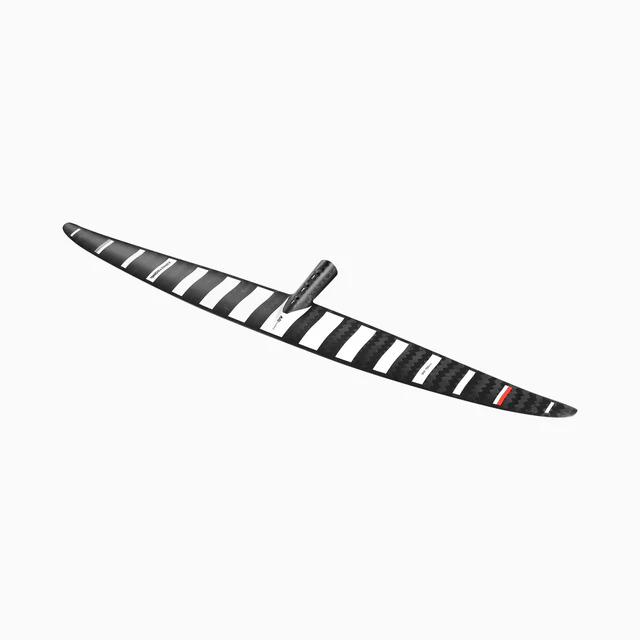
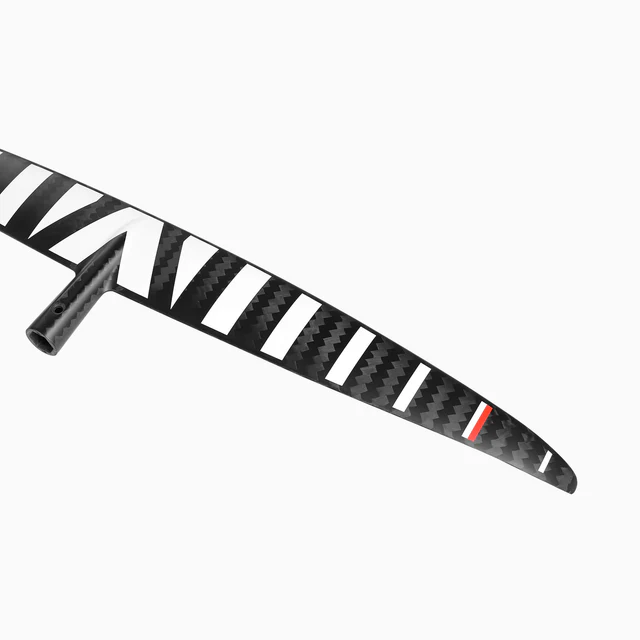
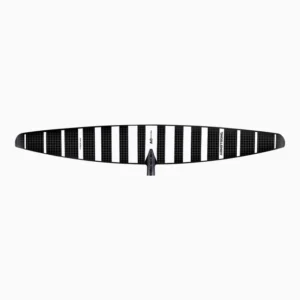
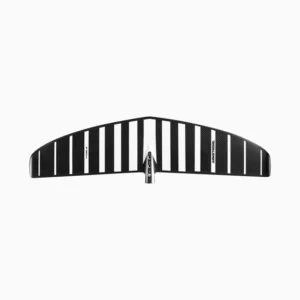
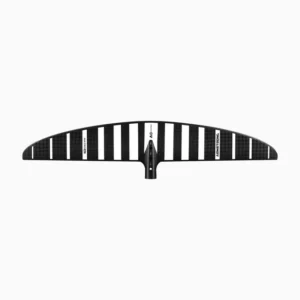
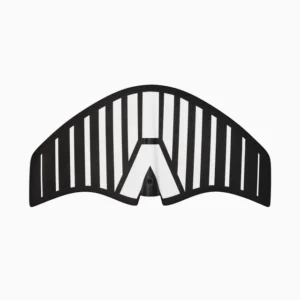
Reviews
There are no reviews yet.